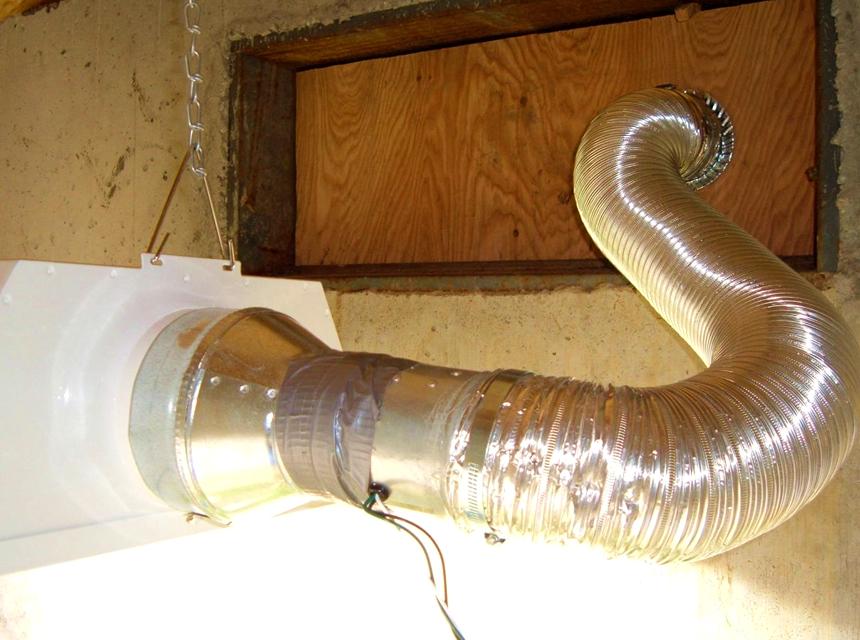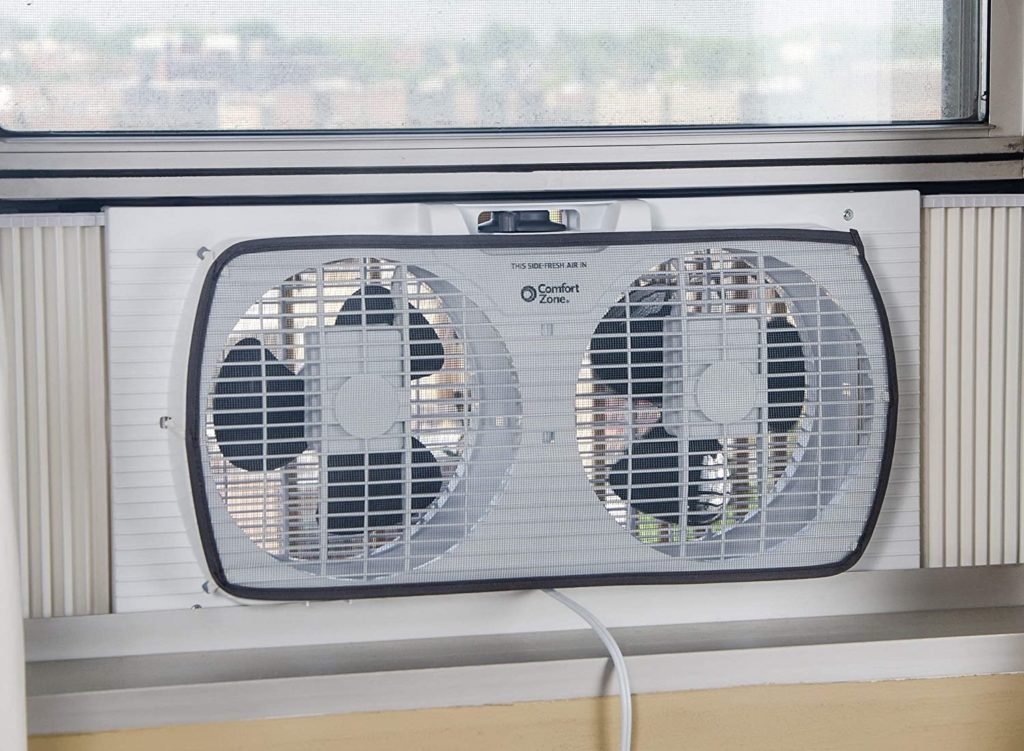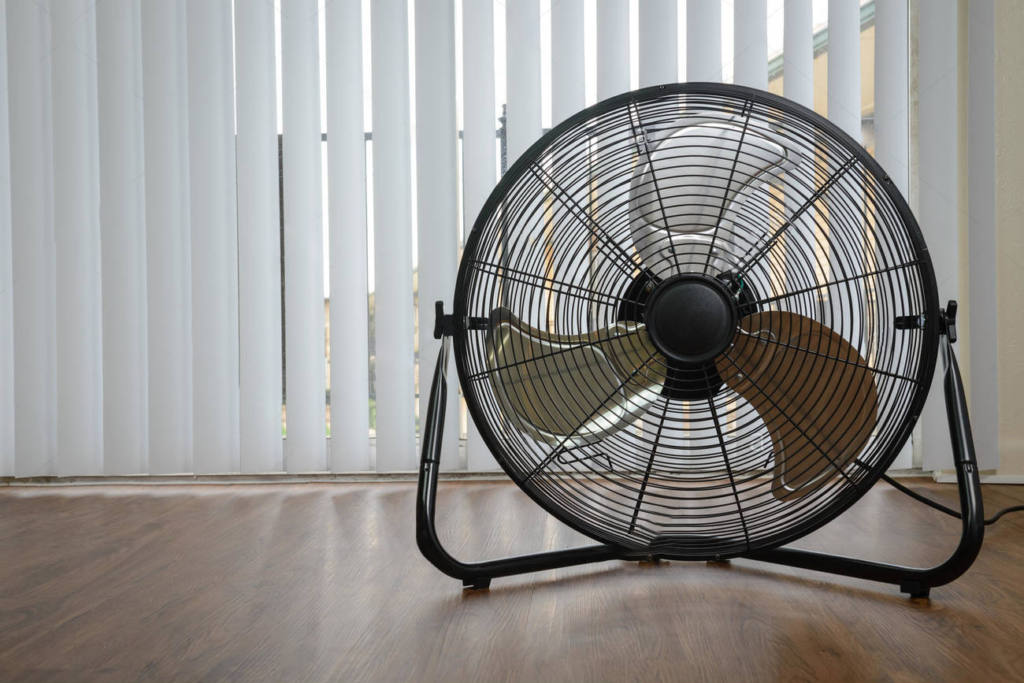

When shopping for a ceiling fan for your home you might have to ask yourself, what size ceiling fan do I need? This is a great way to decide how big or small that option you will get is. However, with so many different choices in stores and online to choose from, you also need to know the different types available.
For instance, there are some options that come with lights embedded in them, and others that only come with the fan itself. There are also low-profile, dual motor, angled mount, remote-controlled, and chandelier ceiling fan options. Knowing what all your choices are can help you see what is available and what kind of ceiling fan style you like, and will fit your home.

You can do this by measuring the square footage of the room. If the room is under 144 square feet, then you should get a fan that has a blade span of under 42 inches and has a CFM rating of 1,000-3,000. This is best used for bathrooms, breakfast nooks, utility rooms, smaller bedrooms, and porches.
If the room is between 144 and 225 square feet, then you will want a fan with a blade span of 44-50 inches and a CFM rating of 1,600-4,500. This size is best used for medium-sized bedrooms, dining rooms, kitchens, dens, and patios.
If the room is between 225 and 400 square feet, then you need a fan with a blade span of over 50 inches with a CFM rating between 2,300 and 6,500. This size is ideal for larger rooms like master bedrooms, family rooms, TV rooms, smaller garages, and gazebos.
For rooms that are larger than 400 square feet, you are going to need a fan with a blade span of at least 62 inches or longer, and a CFM rating between 5,500 and 13,500. These are very big sizes and are designed for great rooms, large garages, basements, and open floor plans where the fan will cool off a larger space.

According to the information given above, because the room is less than 144 square feet, you will need a ceiling fan that has a blade span of under 42 inches and has a CFM rating between 1,000 and 3,000. There are options that range from 24 to 36 inches that come in modern or vintage styles, so you can easily find one that will fit the style of your bathroom aesthetic.
Knowing how to size a ceiling fan for a bedroom is a great skill to have because bedrooms come in many different sizes and can be more difficult to shop for. However, when sizing a ceiling fan for a bedroom, measuring the square footage will allow you to figure out which size is best for the space.
If the room is under 144 square feet, which would be considered a smaller bedroom that younger kids would likely sleep in, then you need a ceiling fan with a blade span of under 42 inches. If the room is between 144 and 225, then look for an option that is between 44 and 50 inches in span. This is ideal for medium-sized rooms that need a bit more power to cool off.
For master bedrooms that are over 225 square feet, you will need to get a ceiling fan with a blade span of over 50 inches. This will allow you to have the airflow you need to cool off the room quickly. Smaller options will not keep the room cool enough and may cause you to turn on the air conditioning.
Bedrooms are places that you will spend more time in, and in the hot summer months when you may leave the fan on overnight, it is important to get a ceiling fan size that will actually cool the room enough to make it comfortable.

To ensure that you have a ceiling fan that will get the job done, you need to know the size of the room. An average house will have a living room that is between 300 and 400 square feet. This means that you will want a fan that is at least 50 inches, or for larger rooms, over 62 inches.
However, because that is a large range, you will need to think about what you will use the room for. If your living room is around 320 square feet, you won’t need a ceiling fan with a blade span that is close to 62 inches, but if you plan on having lots of people over often, then choosing a size that is in the higher 50s would work better to cool off the space.
Choosing a ceiling fan size for your kitchen is a good thing to spend some extra time on. Because this room will get to be the hottest in the entire house when the oven and stove are on, you want to ensure that the fan is working to cool off the room properly, and has the blade span and CFM rating to do so.
With an oven on, and food items being cooked on the stove, a kitchen area could reach around 100 degrees. This heat in the summertime, or even springtime, could be a lot to handle. Without a ceiling fan that helps keep the space cool enough to work in, you may not be able to cook in it the way you would like to.
The average kitchen will range between 100 and 200 square feet. However, even though some will be less than 144 square feet in total, you will still want to get an option that works best for rooms between 144 and 225 square feet. This is because the kitchen equipment heats the room much more than anywhere else in the house. Having a bit of extra power is something that you will need in this room.
So, don’t be afraid to get an option that has a blade span of 44 to 50 inches even for smaller kitchens. The extra power will help cool off the room when you’re cooking and keep you from feeling like you don’t want to cook due to the excessive heat.
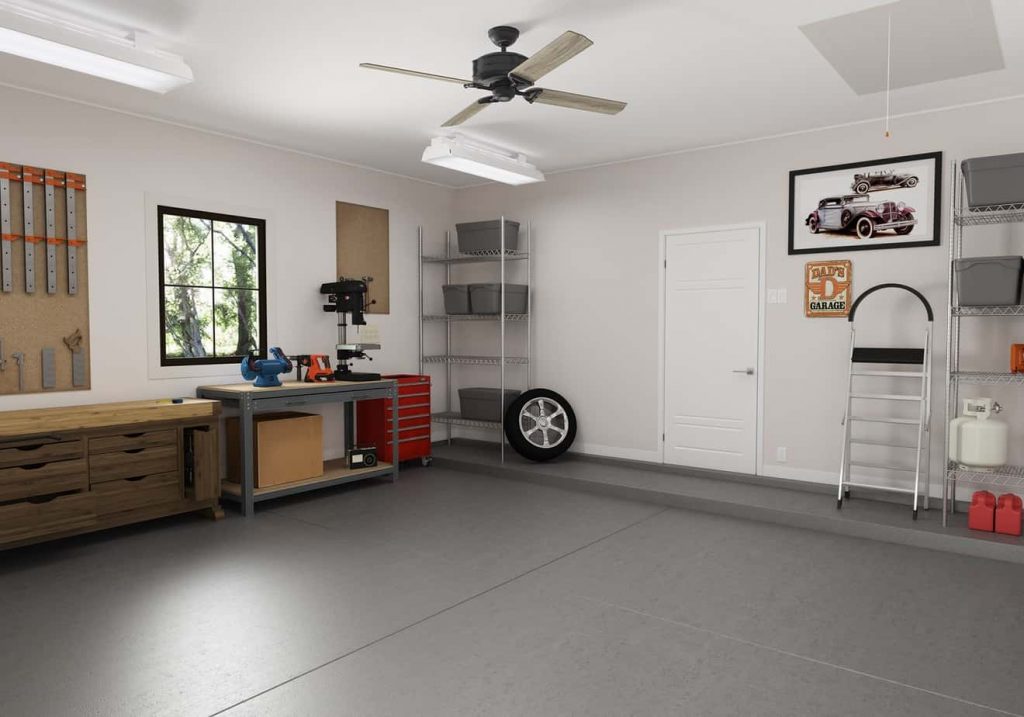
Depending on the exact size of the room, you can go bigger and offer a better cooling system. Garages also have an open area where the door comes up, unlike other rooms in the house that are closed off, this room can get more airflow with the garage door open and the cool air from outside coming in. This can make it easier to buy a slightly smaller option since it won’t be the only airflow.
If your home has a designated office space, you can also get a ceiling fan for this room that will keep you comfortable while you work. Sitting at a desk and typing on a computer doesn’t take a lot of physical effort, but sitting in one space for most of the day can get you feeling stuffy. Having a ceiling fan can help the airflow in the room and keep you cool enough throughout the day.
The size of an office can vary wildly, depending on which room you choose to use for it, or if your home came with a specific office space. However, if you go by the square footage, then you can choose from the available sizes recommended. If the space is less than 144 square feet, which it likely will be, then getting anything under 42 inches will work best.
However, because you will spend a lot of time here, you don’t want to get a fan that is too small. With options that are as small as 16 to 20 inches, you will want to stick with a blade span that is closer to the 42-inch mark. Options that are around 34 or 36 inches in span may work best for this size room.
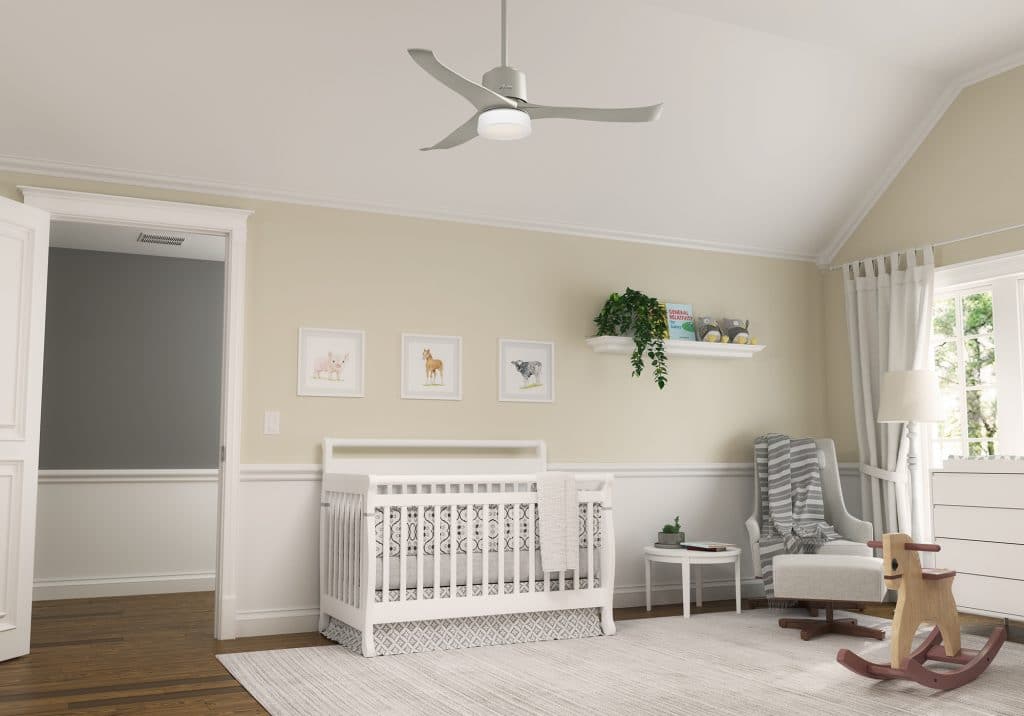
Many nurseries are set up in smaller bedrooms of the house, which means that the square footage is likely under 144 feet. You will want to find a ceiling fan with a blade span of under 42 inches to fit this size room. You don’t want to have an option that is too small, or else it won’t sufficiently cool the room temperature. If you choose a ceiling fan and see no signs of overheating in your child, like wet hair and a sweaty back, then your choice is ideal.
Many ceiling fans are specially designed for nursery use and come in fun colors and shapes for kids to look at.
Ceiling fans come in a variety of lengths that can accommodate higher or lower ceilings. However, knowing how to calculate the perfect height for each room is a great way to know if a particular fan will work with the ceiling height in the room you will install it. Most ceiling fans should be at least seven feet from the floor, and at least eighteen inches away from the walls.
However, with some rooms having higher ceilings, you can hang the fan higher than seven feet to get good airflow. If you have the ability to hang the ceiling fan eight feet from the floor, this will give the room even better airflow. How you measure the hanging height of a ceiling fan is by measuring the height of the ceiling from the floor, then subtract the height of the ceiling fan itself.
This will give you the hanging height and help you determine if it will work for the room that you want it in. If the hanging height is below seven feet from the floor, then it is too low and will need to be placed in a room with higher ceilings.
If the ceilings in your home aren’t all flat and are sloped, you can still have a fan installed. With these types of ceilings, you can get angled mount ceilings fans that offer the ability to attach the fan at an angle so that the fan still hangs in the middle of the room. The mount will be able to move to the side, so you’re able to slant it to match the slope of the ceiling, and attach it at that angle.
These ceiling fans are not difficult to install and are done the same way as the standard mounts. The only difference between these items and a standard mount is the ball joint mechanism that allows you to angle the base.
Ceiling fans operate with a simple technique, with a counter-clockwise motion, the blades push the air in a downward motion that provides a cooling effect. This is done by way of the motor that is connected to the electrical wiring in the home. Once the electrical switch is turned on, the motor receives the electricity to power the motor and move the blades.
The motor of the ceiling fan is the heart of the unit. Without the motor, the blades wouldn’t be able to turn, and it wouldn’t cool the space. With the motor being attached to the electrical wiring, it makes it easy to turn on and off.
The airflow of a ceiling fan works in two ways, to cool the room, or to keep the warm air inside the room. During the summer months, using the ceiling fan in a counter-clockwise motion will push the air downward and create a cooling sensation. However, in the wintertime when the heater is on, you can change the direction of the blades to clockwise, which will help bring the cool air up towards itself and keep the warm air near you.
The CFM rating, or the amount of power needed for one square foot of floor space, is the average amount of air that is needed to cool the entire room. One CFM is required to cool one square foot of space, so a high CFM rating means that the ceiling fan can cool a larger area.

Wet-rated fans can withstand any sort of outdoor weather conditions, including wind, rain, and snow. Damp-rated fans can handle moisture and humidity but are meant for enclosed or covered outdoor spaces only.
There are ceiling fans that come in a variety of blades including three, four, or five-blade options. However, the optimal choices are the four or five blades options. This is because having either four or five blades allow for the best air circulation in the room with a balance that keeps the fan from producing too much noise.


